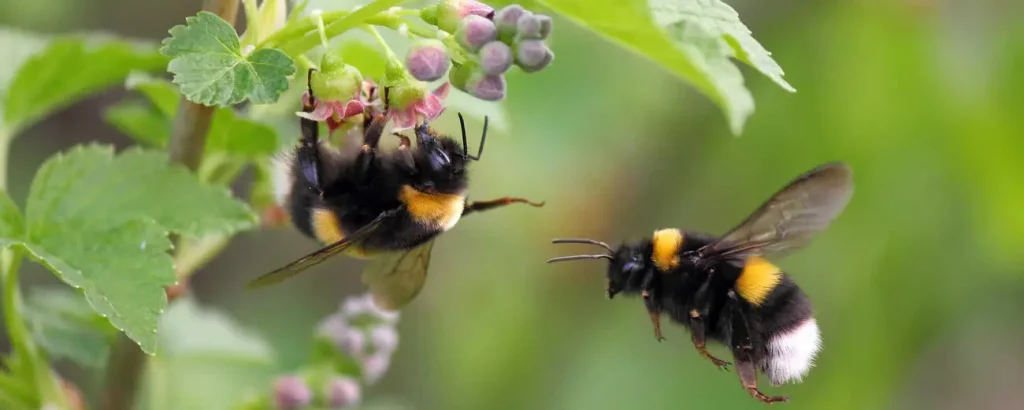The Answer is Yes and No: What You Should Know About Bumblebees and Their Stings
Bumblebees belong to the true bee family. Female bumblebees possess a stinger, with which they occasionally sting.
As is often the case in spring or summer, it has happened again: the window is open, and a large bumblebee is buzzing through the room, desperately searching for a way outside. If you try to catch it with a cloth and swiftly escort the insect outside with your hand, you might regret it. Contrary to the common belief that bumblebees cannot sting like other wild bees, the bumblebee does indeed do just that.
Contents
Not All Bumblebees Sting
Bumblebees (Bombus) belong to the true bee family and, like honeybees, wasps, and hornets, they form colonies. More than 500 species of these robust, fuzzy stinging insects can live together with their queen, usually in burrows or special bumblebee houses. The majority of them are worker bees. There are also some males, known as drones. While female bumblebees and the queen have a stinger, males do not. Therefore, some bumblebees are unable to sting.
Bumblebees That Sting Also Bite
Unlike bees, wasps, or hornets, female bumblebees do not defend their nests by attacking. Bumblebees rarely sting—and then mostly only in self-defense. You will feel their long stinger if you step on one barefoot or catch it with your hand. Otherwise, the insect will initially show defensive behavior by extending one of its middle legs toward the threat. If further provoked, it will buzz loudly and throw itself onto its back, aiming its stinger at the aggressor. Because bumblebees are somewhat clumsy and not very agile, they may also bite in their desperation to place the stinger correctly.
What Happens When a Bumblebee Stings and Bites:
A bumblebee’s stinger has no barbs, unlike that of a bee. It does not get stuck in the skin. Because it does not break off, the bumblebee can sting multiple times. The sting is not very painful as the bee quickly withdraws its stinger, followed by a short pain and intense burning sensation. The sting site is often red and swollen. If the bumblebee bites, you will feel a pinching sensation, but there are no lasting effects.
Tips for Avoiding Bumblebee Stings:
Bumblebees are peaceful creatures. To avoid provoking them, you should behave as follows:
- If a bumblebee has found its way into your room, gently capture it with a glass, place a piece of paper or cardboard over it, and safely release the insect outside.
- Avoid wild, jerky movements, just as you would with bees and wasps. Gently fend off any troublesome bumblebees.
- Never disturb bumblebee nests. If you need to move a bumblebee nest, use thick gloves for protection.
- Bumblebees are attracted to blue and violet colors. If you’re allergic to bumblebee stings, you should avoid wearing these colors.
- Bumblebees, like wasps and hornets, are protected by law. They cannot be killed, nor can their nests be disturbed or destroyed. If necessary, contact the local environmental office to have disturbing nests relocated.
Is a Bumblebee Sting Dangerous?
A bumblebee sting can be dangerous if it occurs in the mouth, causing swelling in the throat. In this case, seek medical attention immediately!
Although bumblebee venom differs from bee venom and is weaker, people who are allergic to bee venom typically also react to bumblebee stings, and vice versa. An allergic reaction may include skin rashes, difficulty breathing, or rapid heartbeat. If the person does not have an emergency kit with them, it is essential to call emergency services.
What to Do After a Bumblebee or Insect Sting
If you are stung by a bumblebee, bee, or wasp on your foot or hand, the swelling will quickly subside if you cool the area. Fresh onion slices or a crushed leaf from plantain (Plantago lanceolata) can also provide quick relief.


